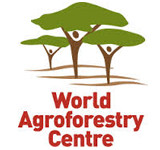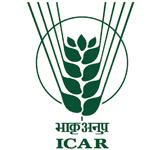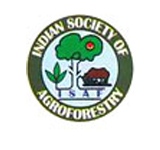
Vigyan Bhavan & Kempinski Ambience
10 - 14 February 2014
Delhi, India
blog

The towering eucalyptus trees can drain and clean up waste water. Photo by Isaiah Esipisu
Eucalyptus, which is arguably among the most maligned tree species for its thirsty nature, has now been found to be a most eco-friendly plant for rehabilitating waterlogged areas, through method known as bio-drainage.
In a study presented at the ongoing World Congress on Agroforestry in New Delhi India, Jagdish Dagar, from the Emeritus Scientist Soil Salinity Research Institute in India, pointed out that “pumping of excess soil water by deep rooted plants using bio-energy is a viable alternative to subsurface drainage.”
Apart from being costly, the scientist said that subsurface drainage has been linked to environmental pollution.
Effectiveness of block plantations of Eucalyptus tereticornis was evident in Indira Gandhi Nahar Paryojana area, where the scientists managed to reduce ground water under the block plantation by 15.7 m over a period of six years, enabling farmers to plant wheat and other food crops.
From a different study, Dr Paramjit Singh Minhas, director of the National Institute of Abiotic Stress Management presented research findings that eucalyptus trees can be used to get rid of raw sewage and other forms of wastewater in an eco-friendly manner.
Eucalyptus trees have long been blamed for their ‘thirst’ for ground water, owing to their long taproots, and there is scientific evidence that the species could dry up water bodies.
“Under normal circumstances, eucalyptus trees can lose water four to seven times more than pastures depending on the method used and conditions on the site such as the type of soil, amount of rainfall among other factors,” Dr Minhas told the Congress session.
But the scientists at the Congress have given evidence to show that when exposed to wastewater, eucalyptus plantations can remove toxic metals, since the trees are known to sequester, tolerate and accumulate high levels of various heavy metals.
According to the researcher, developing ‘green belts’ around cities with forest trees under wastewater irrigation will help revive the ecological balance and improve the environment.
The researchers term these agroforestry systems ‘High Transpiration Rate Systems (HRTS)’ for the treatment of wastewater
Apart from putting waste water to use, the trees, especially the hybrid varieties, can produce timber and good fuelwood. Furthermore, eucalyptus are among the best sequesters of carbon from the atmosphere.
According to Dr Dagar, the carbon content in the dry biomass of about 240 Eucalyptus tereticornis species amounted to 15.5 tons per hectare on average.
However, Dr Minhas pointed out that bio-drainage methods were long term, and needed a lot of investment. “Though engineering approaches like surface and subsurface drainage have been standardized for rehabilitating the saline waterlogged soils, their adoption on large scale is hindered by high capital investment, associated operational and maintenance problems in addition to suitable alternatives for drainage water disposal,” said the scientist.
According to Rajbir Singh, one of the major concerns with this bio-drainage system has to do with agricultural land being turned over to non-food trees.
He further notes that the bio-drainage tree areas can become natural habitats for birds, some of which are harmful to crops that being gown on adjacent agricultural land.
—
By Isaiah Esipisu
Related stories
Using eucalyptus trees to drain wastewater, improve the environment






One Person has left comments on this post
Very nice identification, urgent need for India, where there is lot of open drainage system is common.
I tried with Bamboo, suggested by Dr. Bharathi, Growmore, but protecting it from animals in govt property is impossible in india.
Hope Eucalyptus will solve the problem, I will do it shortly.
Thanks for very needy research report.
Kindly let me if any particularly species is suggested